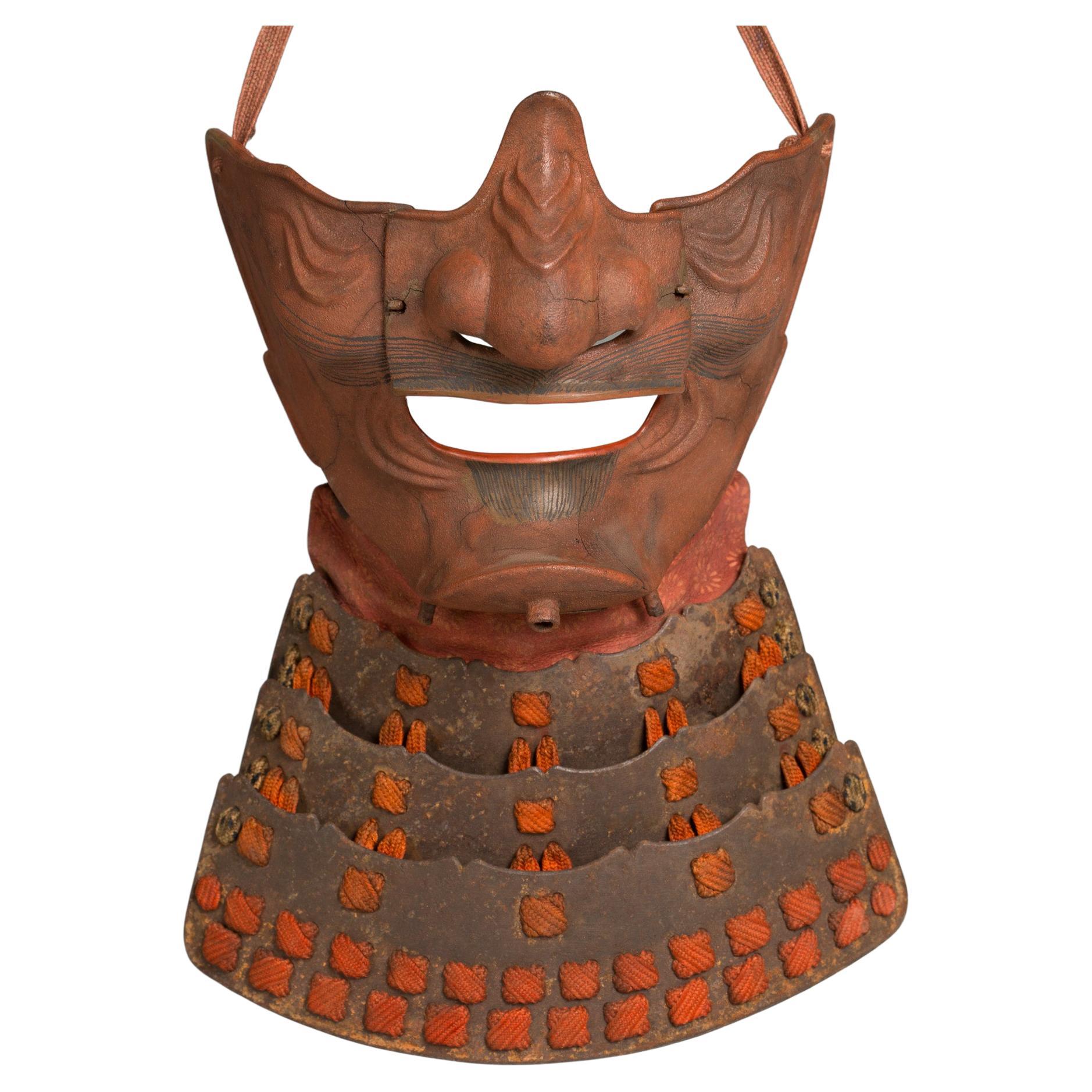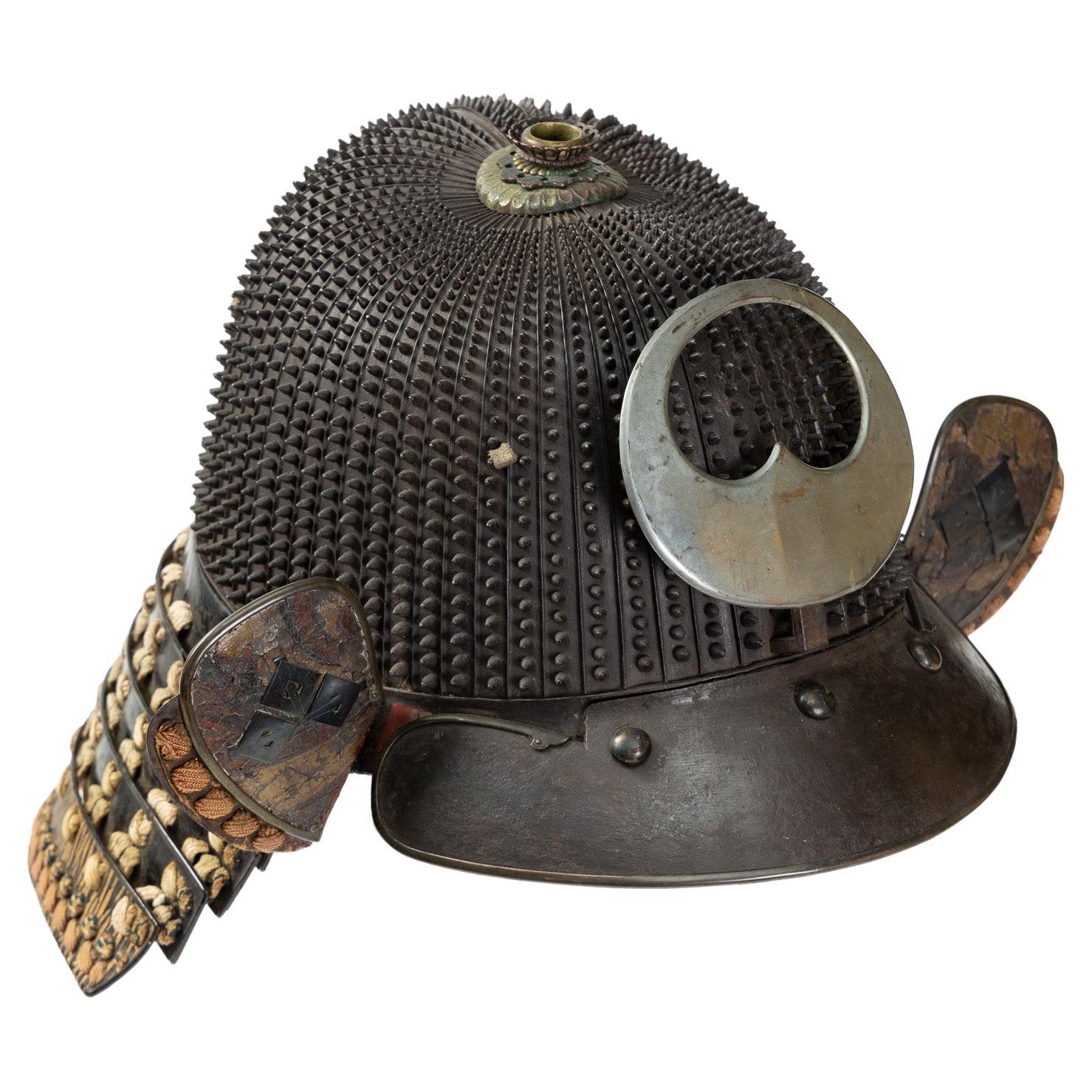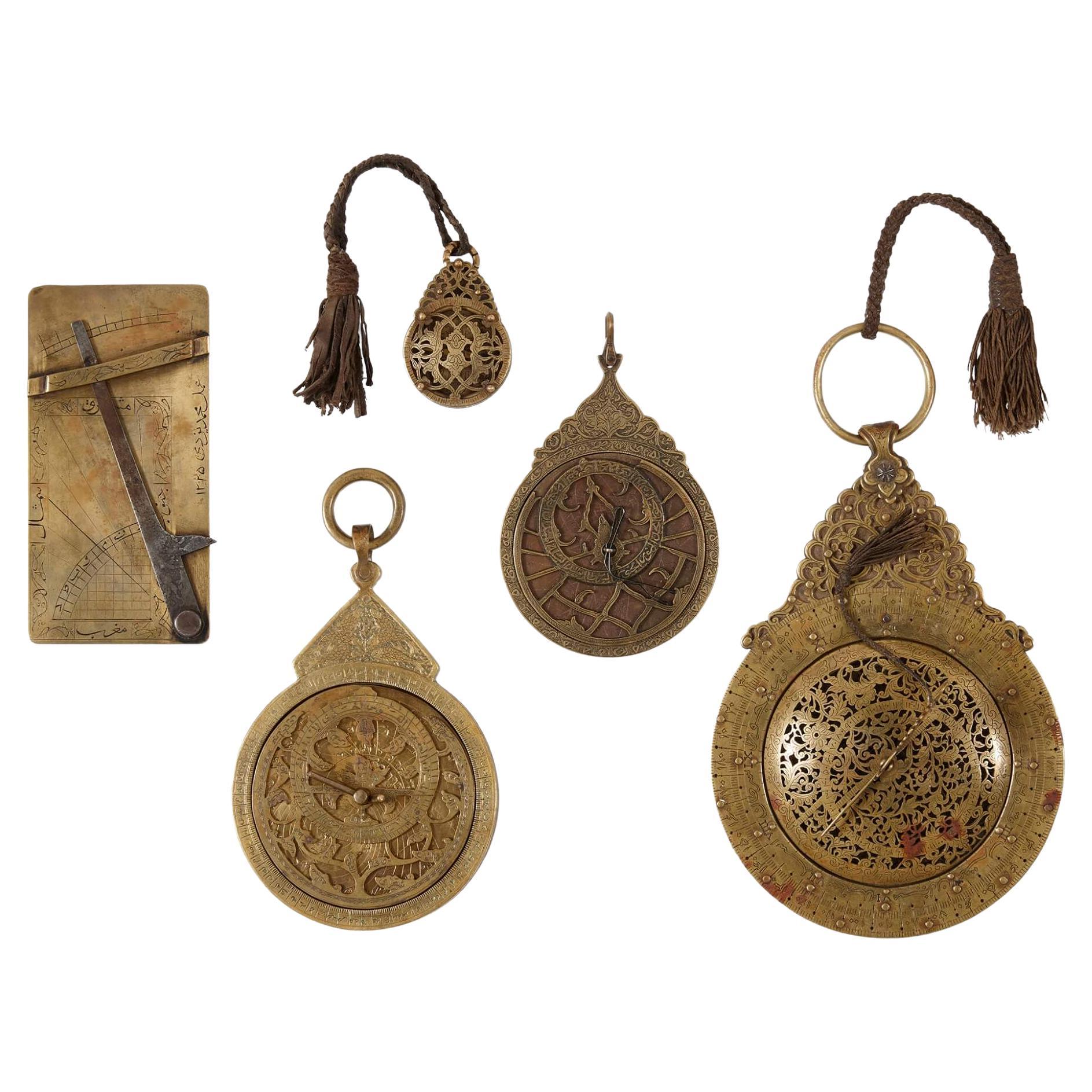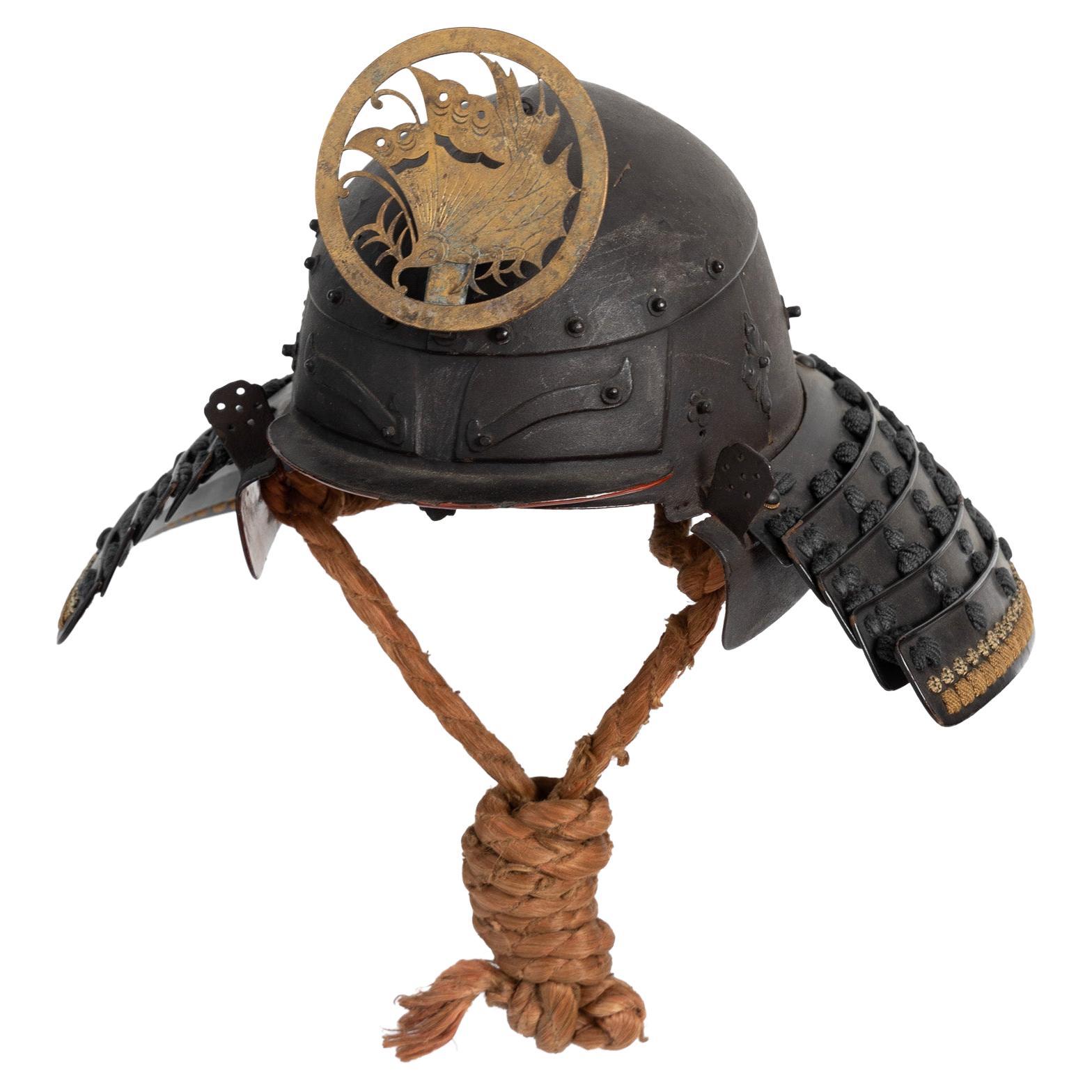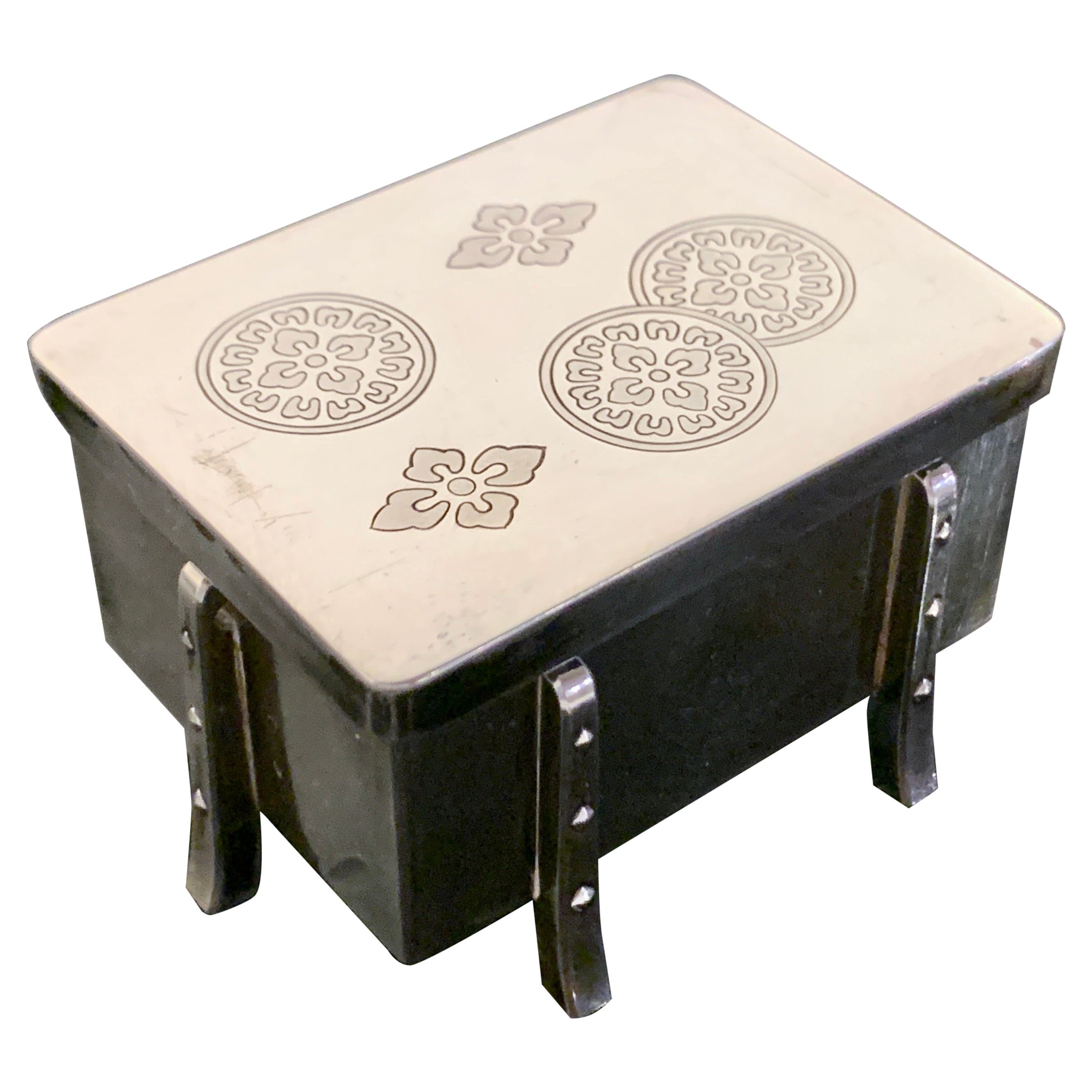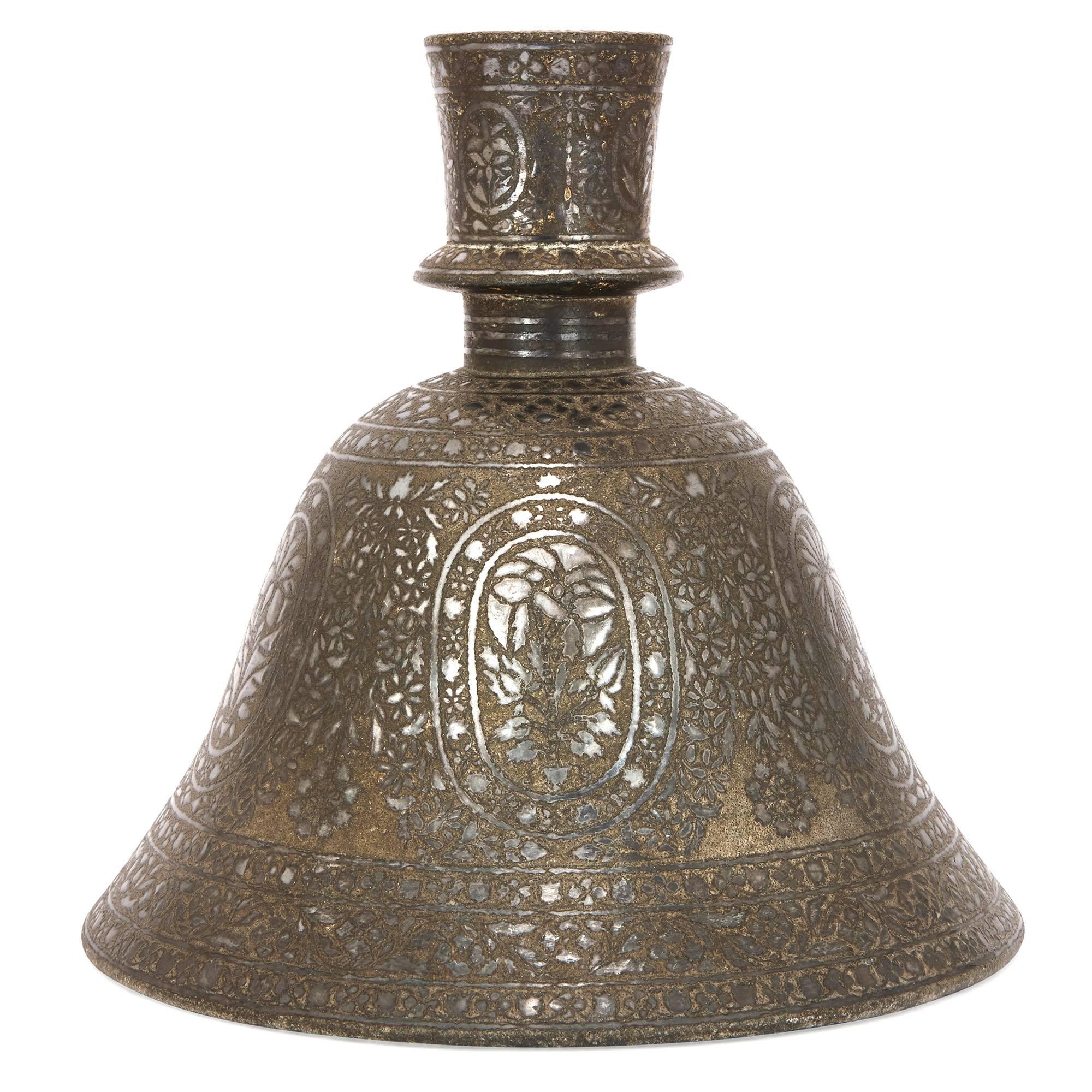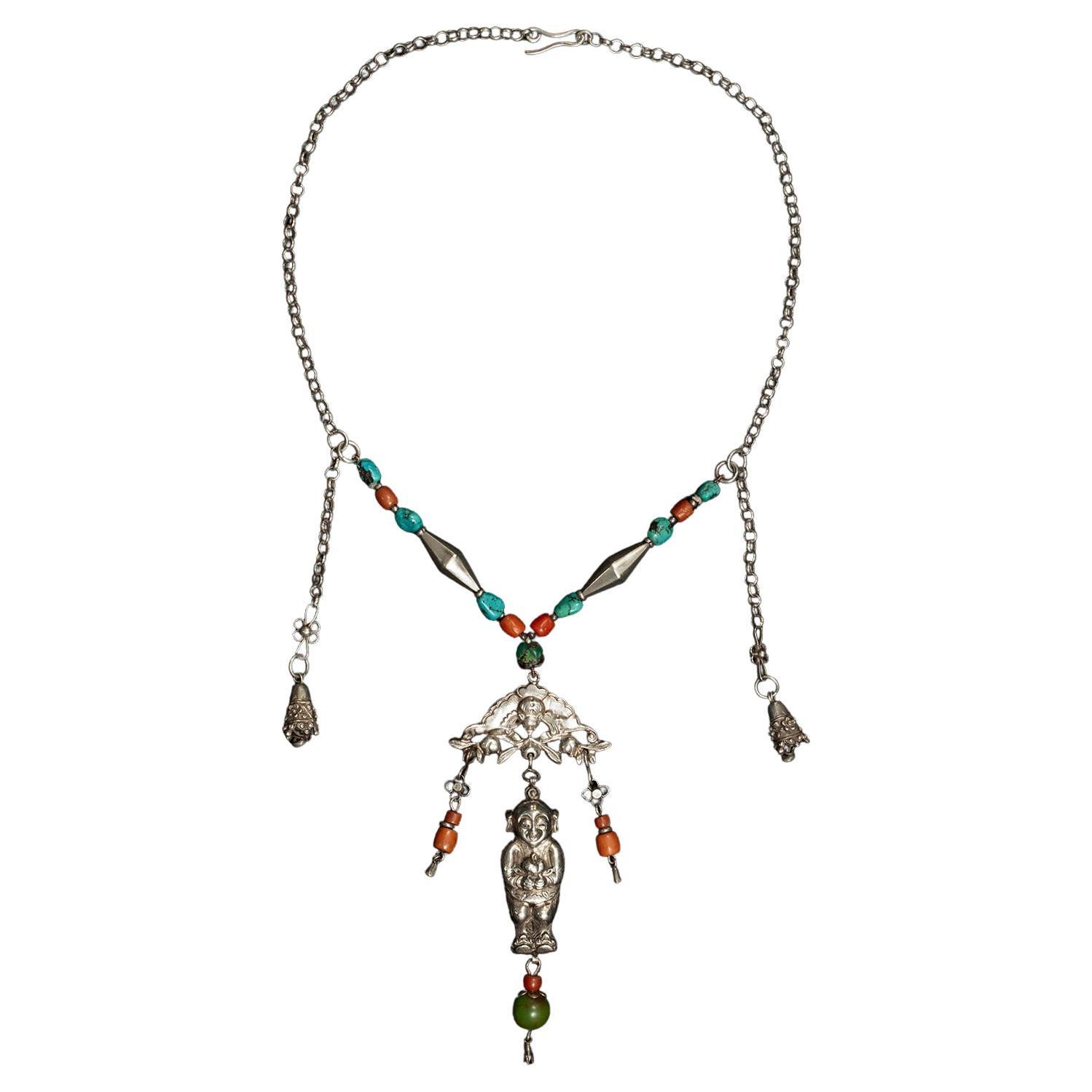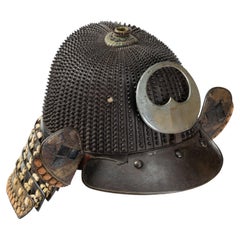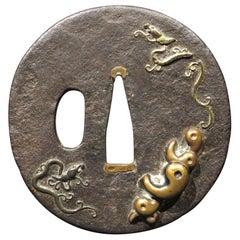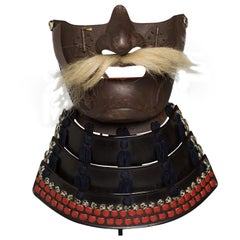
Japanese Samurai Mask 'Menpo', Myōchin School, 18th Century
View Similar Items
Want more images or videos?
Request additional images or videos from the seller
1 of 10
Japanese Samurai Mask 'Menpo', Myōchin School, 18th Century
About the Item
- Dimensions:Height: 11.82 in (30 cm)Width: 7.88 in (20 cm)Depth: 3.94 in (10 cm)
- Materials and Techniques:Iron,Embossed
- Place of Origin:
- Period:
- Date of Manufacture:circa 1750-1780
- Condition:
- Seller Location:Milano, IT
- Reference Number:Seller: 11721stDibs: LU4250212782822
About the Seller
5.0
Recognized Seller
These prestigious sellers are industry leaders and represent the highest echelon for item quality and design.
Established in 2005
1stDibs seller since 2018
Typical response time: 1 hour
More From This SellerView All
- Samurai Mask with a Fierce Expression Ressei MenpoLocated in Milano, ITSamurai mask with a fierce expression Ressei Menpo DATE Edo period (1615 - 1867), 18th century A red lacquered high-level mask, with fierce (res...Category
Antique 18th Century Japanese Metalwork
MaterialsIron
- Koboshi Kabuto, Samurai Helmet with Standing Rivets Haruta SchoolLocated in Milano, ITKoboshi kabuto Samurai helmet with standing rivets Haruta School Early Edo Period, 17th century A 62-plate koboshi-bachi [helmet bowl with small s...Category
Antique 17th Century Japanese Arms, Armor and Weapons
MaterialsIron
- Suji-bachi kabuto and menpo Signed by Myōchin Muneaki and dated 1853Located in Milano, ITSuji-bachi kabuto and menpo Signed by Myōchin Muneaki and dated 1853 Signature: Kaei 6 - Ushidoshi Oshu Nihonmatsu-ju Myōchin Ki (no) Muneaki saku Made in 1853 by Myōchin Ki Muneak...Category
Antique 18th Century and Earlier Metalwork
MaterialsIron
- Okitenugui Kabuto Samurai Helmet Shaped as a Head Towel Saika, Early Edo PeriodLocated in Milano, ITOkitenugui kabuto Samurai helmet shaped as a head towel Saika, early Edo period, 17th century The Haruta armorers who moved to Kii province in the early 17th century, took the name from the village where they worked, Saika, near Wakayama, possibly on request of the local daimyo, Asano Yukinaga, a great armour amateur. Specialised in the construction of plate helmets, they produced mainly two typologies of kabuto: one with six plates covered with a chrysanthemum-shaped plate on top and one shaped as a “head towel”, called okitenugui. The latter type of kabuto employs very heavy plates crafted in a curved manner and was improved in order to make it resistant to firearms. This okitenugui kabuto features some distinctive decorations of the Haruta school, including the application of cut-out iron elements, including eyebrows, washers and lozenge-shaped decorations on the sides. The ring on the top, however, is a rare feature and could be used to hold a small war flag.Category
Antique 17th Century Metalwork
MaterialsIron
- Japanese Articulated Iron Jizai Okimono of a Lobster by Myochin MuneharuLocated in Milano, ITThis articulated okimono represents a naturalistically rendered lobster, with fully articulated limbs, antennae, body, and tail and comes with an inscribed wood storage box. Signed:...Category
Antique 19th Century Japanese Metalwork
MaterialsIron
- Go-Mai Uchidashi Dō Tosei Gusoku Samurai Armor Decorated with an Embossed RabbitLocated in Milano, ITGo-mai uchidashi do tosei gusoku Samurai armor decorated with an embossed rabbit Edo period, 19th century This samurai armor is complete and original, with consistent elements...Category
Antique 19th Century Japanese Metalwork
MaterialsIron
$37,856Free Shipping
You May Also Like
- Collection of 18th and 19th Century Arabic Astrolabes and QuadrantLocated in London, GBA collection of 18th and 19th century Arabic astrolabes and quadrant Persian, 18th/19th Century Largest: height 23cm, width 13cm, depth 3cm Smallest: height 6.5cm, width 4.5cm, depth 1.5cm This excellent set of antique astronomical instruments is a selection of five Persian brass astrolabes...Category
Antique Early 19th Century Persian Islamic Scientific Instruments
MaterialsBrass
- A Very Good 19th Century Iron & Mixed Metal Tsuba, Japan Edo Period (1603-1868)Located in Ottawa, OntarioA finely decorated iron & mixed metal tsuba, showing a dark-brown iron ground decorated in low relief with organic inspired motifs in gold, silver & copper.Category
Antique Mid-19th Century Japanese Edo Metalwork
MaterialsGold, Silver, Copper, Iron
$1,200 Sale Price20% Off - Japanese Silver Karabitsu Bonbonniere Box, Taisho Period, JapanLocated in Austin, TXA fine Japanese silver bonbonniere box in the shape of a karabitsu, Meiji Period, circa 1900, Japan. The small bonbonniere crafted of silver in the form of a karabitsu, a storage ...Category
Vintage 1920s Japanese Meiji Metalwork
MaterialsSilver, Sterling Silver
- 19th Century Bronze BullLocated in Perth, GBA beautifully modelled bronze bull of classic form. The piece measures approximately 15cm x 8.5cm x 5cm or 6 inches x 8.5 inches x 2 inches.Category
Antique Mid-19th Century Metalwork
MaterialsBronze
- Khitan Liao Dynasty Gold Clad Horse Trappings, 10th-11th Century, ChinaLocated in Austin, TXA wonderful and rare set of Khitan Liao gold clad copper alloy repousse horse trappings, featuring thirteen pieces on a modern museum display mount, Liao Dynasty...Category
Antique 15th Century and Earlier Chinese Tang Metalwork
MaterialsCopper, Gold
- 19th Century Indian Bidri Metal Hookah BaseLocated in London, GBThis fascinating piece dates from the 19th century in India, where it was used as a water base for a hookah, or shisha pipe. In traditional hookah smoking, the base of the pipe is no...Category
Antique 19th Century Indian Metalwork
MaterialsMetal
Recently Viewed
View AllMore Ways To Browse
Antique Mustache
Samurai Mask
Japanese Samurai Mask
Japanese Menpo Mask
Antique Metalwork
Japanese 19th Bronze
19th Century Japanese Bronze
Bronze Meiji Furniture
Meiji Bronze
Japanese Bronze Meiji
Antique Silver Asian
Asian Metal Antiques
Pair Of Bronze Asian
Enamel Cloisonne Art
Bronze Meiji Period
Meiji Period Japanese Bronze
Vintage Metalwork
Asian Cloisonne

